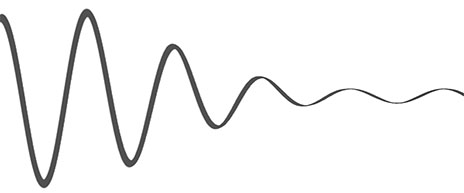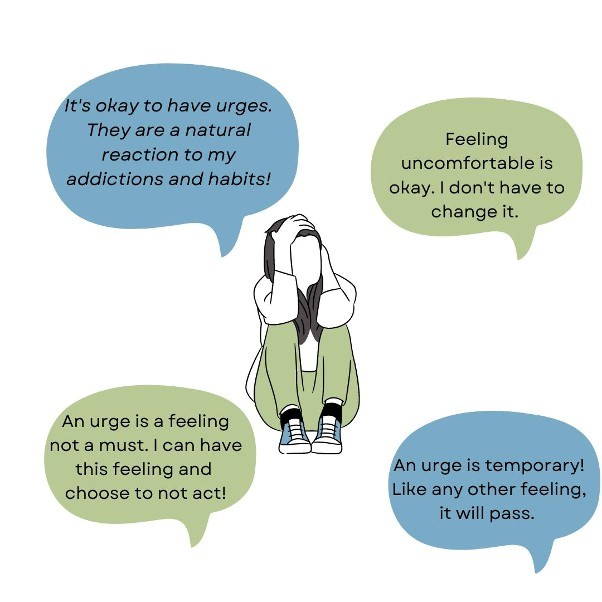Cravings are a natural part of the journey when you are looking to change your alcohol and/or other drug use. For most people, cravings will be the strongest in the early parts of cutting down this behaviour, but for some people, cravings may occur for the first few months and sometimes even years after their alcohol or substance use has stopped.
The experience of cravings can be linked to the long-term use of alcohol and/or other drugs and can continue long after you have stopped using. What this means is that people who have had a longer and heavier history of use will tend to experience stronger and more intense urges.
Cravings can lose their power if you don’t add force to them by acting on your thoughts and desires. Even if you drink alcohol or use drugs only now and then, you will keep those cravings alive. Cravings are like a stray animal – if you keep feeding them, they will keep coming back.
Remember that when urges go unfed, future urges gradually become weaker, losing their power. The peak or intensity of the crave wave will become smaller, and the waves will become further apart. That is why understanding cravings and urges is key to learning how to tolerate and overcome them.

What are urges and cravings?
When we look at the words 'urges' and 'cravings', these refer to a broad range of thoughts, strong desires and/or physical sensations that can lead you to act impulsively and out of habit.
You may feel that these urges and cravings are difficult to control. You may also feel an uncomfortable split within yourself, where you are being pulled in two different directions (i.e., the side of you that wants to change your use and be a healthier version of yourself and the side of you that wants what it wants).
It is key to understand that urges are an intense physical and emotional experience that can be triggered by an event, a thought, a feeling, a memory, or an image which pulls someone towards an automatic way of thinking and responding. Cravings can also appear because of a trigger (e.g., incident, feelings) or a situation (e.g., people, places, or events) that has been associated with alcohol and/or substance use.
It is very helpful to understand your urges, so, consider tracking and evaluating them over a period of a few weeks. By doing so, you will be able to increase your awareness around what triggers an urge or a craving, when and how you experience them, and ways to avoid and cope with them in the future.
How to practice Urge Surfing
- Acknowledge you are having an urge or craving (wave).
- Notice your thoughts and feelings without trying to suppress them.
- Note: It is normal to feel discomfort when you experience an urge or craving.
- Remind yourself of the following:

- Reframe from taking action on your urge or craving.
- Visualise your urge or craving as a wave.
- Focus on your breathing.
It may help to think of cravings just like waves at the beach. Every wave in a set starts off small, before it builds up to its highest point, and then breaks and flows away to shore. Each individual wave never lasts more than a few minutes. An urge is just the same. It starts off small, and then it builds up, with physical parts, behaviours, and thoughts, but it soon reaches its peak - just like a wave - and will eventually break and reduce in size. This intense part of the process usually doesn’t last more than 10 minutes, so try and stick with it and ride the wave.
Crave waves are also at their most intense in the early stages of cutting back or stopping, so even though the urge may continue to come and go, they will become less intense and frequent over time. It can be helpful to imagine that in the future, the waves might be less powerful, and a more gentle, foamy surf.
Tips for Urge Surfing
The more you take care of yourself and your body, the more likely it will be that you have the energy and focus on Urge Surfing. But we at eCliPSE understand that sometimes using alcohol and/or other drugs can make it difficult to take care of yourself.
Remember that Urge Surfing is a skill to be practiced and that you will get better at it over time. Praise yourself for trying, even if you aren’t as successful as you had hoped for, or if you ‘give in’ to an urge after a long time. It is all part of the journey!
Urge Surfing requires you to be patient and to take care of your physical health. Ensure you are getting enough sleep, getting some exercise (even a short walk), making healthy food choices with enough fruit and veggies in your diet, and having a good support network of family and friends, as well as professional support if needed. You can also check out our Coping with cravings page for more tips.
Safe withdrawal
Withdrawal is the change that your body goes through when you stop or cut back on substances. This process will be different for everyone. It can involve physical pain, fatigue, irritability, intense cravings, and insomnia. It is important to know that suddenly cutting back on certain substances can be dangerous and even cause harm. You can discuss withdrawal with a health professional or a drug and alcohol service. If you need help finding services check out our Find a service page.